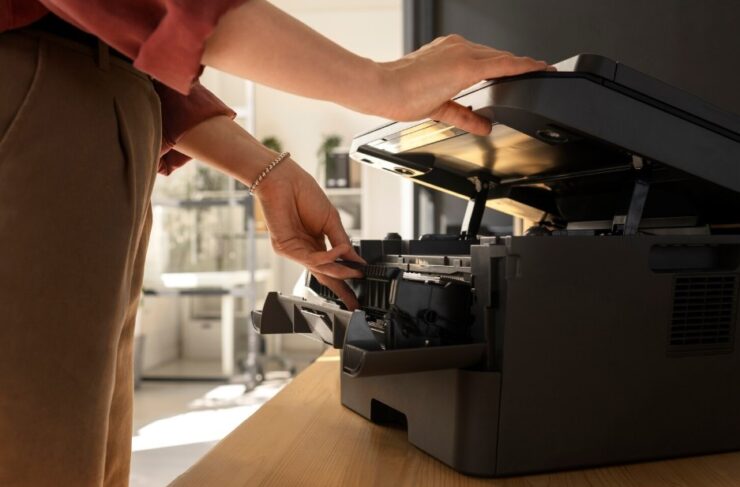When a business needs a reliable photocopier, one of the key decisions is whether to purchase outright or go down the leasing route. While buying might seem appealing at first glance, leasing offers a suite of financial and operational benefits — especially for growing or cash-sensitive organisations. In this article, we’ll explore the advantages of leasing a photocopier instead of buying, to help you make a more informed decision.
1. Lower Upfront Cost and Preserved Cash Flow

One of the most attractive benefits of leasing is the minimal capital outlay required at the start. Instead of paying a large lump sum for the machine, you spread payments over a fixed period. This preserves your working capital, leaving more funds available for staffing, marketing or other core investments. This can be particularly helpful for small and medium businesses that can’t afford to deplete cash reserves on expensive equipment.
2. Predictable Budgeting & Fixed Payments
Leases generally involve fixed monthly or quarterly payments, making it easier to forecast your expenses. You don’t have to worry about sudden surprise costs for the equipment, which simplifies budgeting. With ownership, you may get hit by unexpected repair or replacement costs, which can disrupt cash flow.
3. Maintenance, Service & Support Included
A major headache of owning hardware is managing repairs, downtime, and spare parts. Many lease agreements bundle servicing, parts, maintenance, and even consumables like toner into the contract. This means you don’t have to find a separate supplier or scramble when something breaks — the leasing company handles it under agreed service levels. That helps ensure high availability and reduces internal IT burden.
4. Easier Upgrades & Technology Refresh

Photocopier technology evolves — improved scanning, better energy efficiency, integration with cloud and mobile workflows, and stronger security features. If you own a copier, upgrading means disposing of or selling the old unit at your own cost. In contrast, a photocopier lease can include upgrade options at the end of its term. That way, your business can stay current without being stuck with obsolete infrastructure.
5. Tax Efficiency & Accounting Benefits
Lease payments are often treated as operating expenses rather than capital expenditures, meaning they can be deducted from taxable income in many jurisdictions. That can reduce your overall tax burden and improve your net cash flows. In contrast, an outright purchase may require capital allowances and depreciation schedules, which may be less flexible.
6. Reduced Risk of Obsolescence
When you purchase a copier, you carry all the risk: what if the hardware becomes obsolete, parts become hard to source, or software integrations are outdated? In a lease model, much of that risk is shifted to the lessor. You are better positioned to swap in a newer model when your needs change or when new innovations arrive.
7. Flexibility & Scalability
Business needs evolve. You might require extra capacity or features (e.g. higher speed, colour scanning, finishing) as you grow. Leasing gives you more flexibility to scale up or down, or to change your configuration mid-term (in some contracts) without being locked into an underpowered or overpowered machine indefinitely.
8. Preserve Balance Sheet & Improve ROI Metrics
Because the copier is not recorded as a capital asset (in many lease arrangements), it may have less impact on certain financial ratios and borrowing capacity. For businesses trying to optimise return on invested capital (ROIC), leasing lets you decouple major purchases from your asset base.
When Buying Might Still Make Sense

It’s fair to note that leasing isn’t universally best. Over a long lifetime, the cumulative lease payments may exceed the cost of purchasing. Ownership gives you full control over customisation, and once the machine is fully paid off, you no longer face monthly charges. If your usage is predictable and you plan to keep the same copier for many years, buying could be more economical in some cases. But many organisations find that the benefits of flexibility, reduced risk and stable budgeting make leasing more attractive — especially in dynamic environments.

